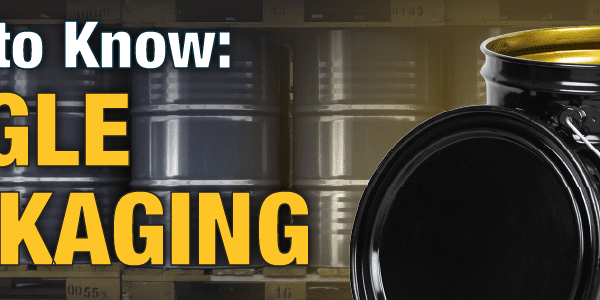
TDG Emergency Response Assistance Plans (ERAP) Update
On June 30, 2018, Transport Canada issued a proposed amendment to Part 7 of the Transportation of Dangerous Goods Regulations (TDG). This part covers the requirements for Emergency Response Assistance Plans, or ERAPs. Details can be found on Government of Canada’s website.
Canada’s ERAP requirements are unique, not being adopted from the UN Recommendations on the Transport of Dangerous Goods. Essentially, they require consignor of significant amounts of high risk dangerous goods to establish a specific protocol, often involving an on-call response team, that can assist local responders in case of a release. Transport Canada must review and approve the plan before the consignor can offer or import affected shipments (although the approval only has to be issued once.) Since the Lac-Mégantic disaster in 2013, improving ERAP requirements has been a particular concern of Transport Canada’s.
The June amendment has four main goals:
-
- To clarify how an ERAP should be implemented;
- To enhance emergency preparedness and response;
- To reduce the regulatory burden for those affected by the requirement; and
- To make some general “housekeeping” changes to keep all parts of the regulations harmonized.
Clarifying Implementation of ERAPs
Currently, the regulations are unclear as to how exactly an ERAP would be implemented – presumably it would be by emergency responders or by the person with control of the released material, but it’s never been established precisely. The amendment requires the person with “charge, management or control” of a released material that has an ERAP to report it to the ERAP holder (normally the original consignor), and lays out the required information they should convey. After receiving the on-scene report, the ERAP holder would take steps to initiate the ERAP response.
A new concept in the proposal is that calling the ERAP telephone number on the shipping document won’t necessarily start the emergency crew heading towards the scene of the spill. Instead, the response will be broken into two “tiers,” depending on the severity of the accident.
The first tier would involve what Transport Canada calls “remote” response, and involves giving advice over the telephone, and monitoring the situation. If the situation is judged to require it, response can be increased to Tier 2, where the ERAP response team would be sent out to the scene of the release.
For either Tier 1 or Tier 2, the ERAP holder would have to contact the agency CANUTEC by telephone as soon as feasible.
Enhancing Emergency Preparedness and Response
When making an application for approval of an ERAP, the prospective holder is required to submit the request to Transport Canada. The amendment will give much more detail on what this submission should entail, including a potential incident analysis covering scenarios such as minor releases, major releases and fires. Each scenario must address potential consequences, the incident response (based on the tiers) and who is responsible for taking the measures.
The amendment will also help align the language in Part 7 with the description of ERAPs in the Transportation of Dangerous Goods Act. Currently, the Act mentions that person who “handle” or “transport” dangerous goods in amounts requiring an ERAP are subject to these requirements, but the Regulations merely address the responsibilities of those who “offer for transport” or “import” such shipments. Rewording Part 7 will attempt to clarify that handlers and transporters are also affected, which may have significant impacts on who must register the ERAP.
Reducing Regulatory Burden
One of the main complaints about ERAPS is that they are a burdensome requirement for consignors, involving considerable expense as well as creating a significant amount of confusion regarding who must obtain the ERAP for imports or goods which change hands before final delivery. The amendment will attempt to reduce these requirements by allowing “authorized users” to use an ERAP that already exists belonging to someone related to the shipment, such as the original manufacturer.
The holder of the approved ERAP would no longer be required to notify Transport Canada when such an arrangement begins or ends. The amendment will allow an authorized user to utilize the pre-existing ERAP if the authorized user is not the producer of the affected goods, the ERAP will apply in the geographic area the authorized user is shipping to or through, and the original holder of the ERAP has agreed to respond to incidents involving the authorized user’s shipments.
Note that when an authorized user is “piggybacking” on a pre-existing ERAP, the shipping document must note the holder of the original ERAP, with the words “used under the authorization of.”
Further parts of the amendments will clarify the requirements for ERAPs for infectious substances to apply to all Risk Group 4 pathogens listed in the Human Pathogens and Toxins Act, as well as clarify what “residue” means with regards to ERAPs.
Housekeeping
The amendment will address some significant issues that exist outside Part 7. For example, it will replace the word “activate” in relation to ERAPs with the word “implement.” It addresses a current gap in Part 8, Reporting, where currently goods in classes 3, 4, 5, 6.1 or 8 are not found on the table for reporting quantities if they have no packing groups. Finally, it clarifies that the ERAP implementation telephone number must be monitored 24 hours a day, a rather inexplicable omission to this point.
Have Your Say!
If you’re subject to the requirements of Part 7, some of these changes may strike you as helpful, others less so. Of course, since this is Gazette I, you’ll have an opportunity to let Transport Canada know your thoughts. Comments may be made officially within sixty days of the issuance of the amendment (that is, until August 29th) to:
Geneviève Sansoucy, Regulatory Affairs Branch,
Transportation of Dangerous Goods Directorate,
Department of Transport, Place de Ville, Tower C,
9th Floor, 330 Sparks Street, Ottawa, Ontario K1A 0N5
fax: 613-993-5925
email: [email protected]
Do you have any questions about ERAPs or other requirements in the TDG Regulations? If you’d like more information, contact ICC Compliance Center at 888-442-9628 in the USA, 888-977-4834 in Canada, and ask for one of our regulatory specialists.






 ICC USA
ICC USA ICC Canada
ICC Canada